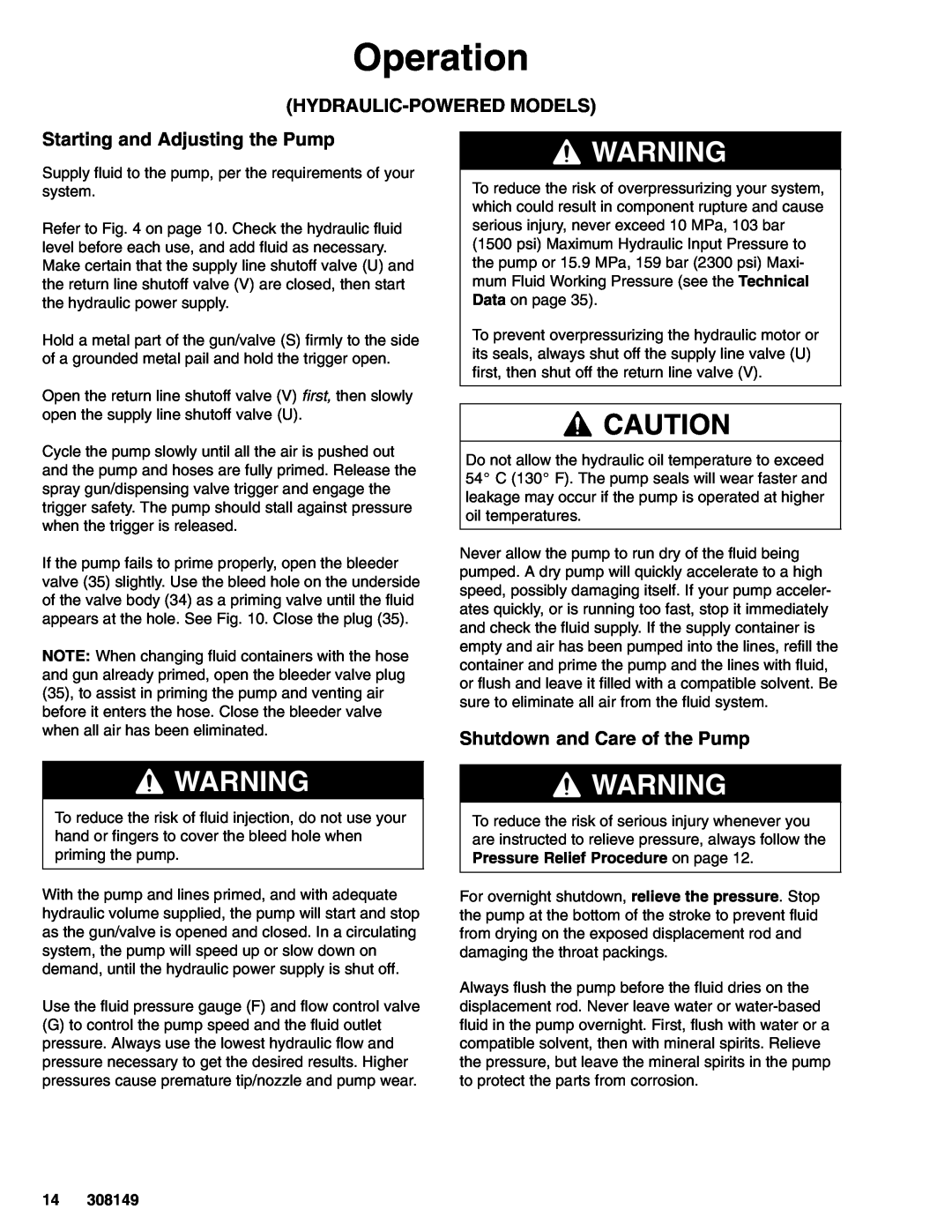Contents
Part No. 222828 Pump, Series A
Instructions - Parts List
CARBON STEEL
Part No. 246935 Pump, Series A
Table of Contents
Caution Symbol
Symbols
Warning Symbol
EQUIPMENT MISUSE HAZARD
SKIN INJECTION HAZARD
MOVING PARTS HAZARD
FIRE AND EXPLOSION HAZARD
TOXIC FLUID HAZARD
Page
Installation
Grounding
AIR-POWEREDPUMPS
Installation
Air Line Accessories
SYSTEM ACCESSORIES
Mounting Accessories
Fluid Line Accessories
HYDRAULIC-POWEREDPUMPS
Installation
Hydraulic Motor Drip Pan
Filters
Hydraulic Lines
Fluid Supply Hoses
Operation
ALL MODELS Pressure Relief Procedure
AIR-POWEREDMODELS Starting and Adjusting the Pump
Packing Nut/Wet-Cup
Model 222835 Shown
AIR-POWEREDMODELS
Shutdown and Care of the Pump
Operation
Operation
HYDRAULIC-POWEREDMODELS
Starting and Adjusting the Pump
Shutdown and Care of the Pump
CAUSE
Troubleshooting
SOLUTION
Required Tools
Service
Disconnecting the Displacement Pump
Premier Pumps
Service
King, Bulldog, and
Viscount Pumps
Reconnecting the Displacement Pump
Service
INTAKE CHECK VALVE
Displacement Pump Disassembly
Service
308149
Service
THROAT PACKING DETAIL
Service
4Remove and clean plug
DETAIL OF PISTON CHECK VALVE
Reassembly
Service
DETAIL OF
Service
THROAT PACKING DETAIL
PISTON CHECK VALVE
Service
Model 222829 Pump, Series A
Parts
Model 222828 Pump, Series A
Model 246935 Pump, Series A
Model 246936 Pump, Series A
Model 222835 Pump, Series B
Model 222901 Pump, Series B
24 1 Ratio, with Quiet King Air Motor
Parts
222800
Parts
Displacement Pump
Model 222810, Series B Model 246934, Series A
0919A
Ink Pump Conversion Kit
PTFE Packing Conversion Kit
Leather Packing Conversion Kit
Displacement Pump
Technical Data
Model 222828 and 246935 Bulldog Pump
Model 222829 Quiet Bulldog Pump
Technical Data
Model 222835 and 246936 King Pump
Technical Data
Model 222901 Quiet King Pump
Technical Data
Model 222940 Premier Pump
Technical Data
liters/min
Model 222902 and 246937 Viscount Pump
Technical Data
liters/min
B A E C D
Dimensions
Model 222835 Shown
Pump Model
Premier Pumps
Mounting Hole Layouts
Bulldog, King, and Viscount Pumps
FOR GRACO CANADA CUSTOMERS
Graco Standard Warranty
Graco Information
Graco Headquarters Minneapolis
